This was published 8 years ago
Stately Saint Petersburg the Vienna of the north
By Ross Peake
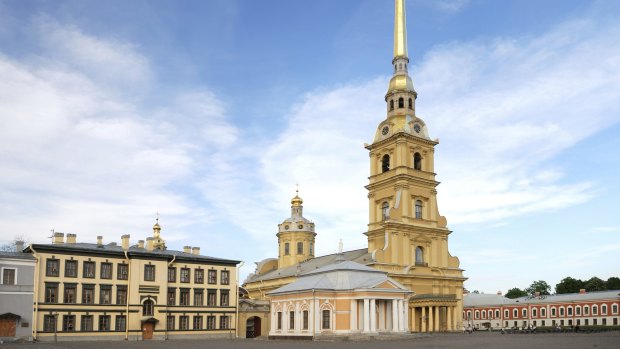
Saint Peter and Paul Cathedral, St Petersburg.Credit: Getty Images
To stand in the cell where Leon Trotsky was incarcerated is a powerful reminder of the troubled history of the former Soviet Union.
So too, is to view the crypt holding the remains of the Romanov family – father, mother and children – who were slaughtered by the Bolsheviks.
Both sites are in the Peter and Paul Fortress, the oldest building in Saint Petersburg, a city touted as the Vienna of the north.
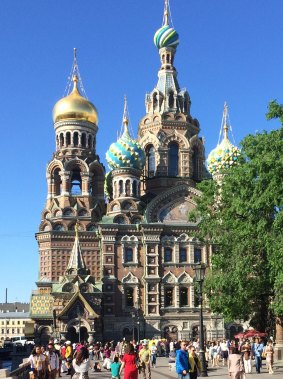
Church of the Saviour on Spilled Blood, St Petersburg.Credit: Ross Peake
Much of the city was damaged during the siege of Leningrad – as the city was then known – in World War II, but most has been restored, drawing hordes of tourists, particularly in the northern spring and summer.
If you plan to fly from Canberra without overnight stops, expect to be on the move for an exhausting 40 hours. But the charm of this city of five million people makes you soon forget the jet lag and unsatisfactory napping in airport terminals.
So unlike drab Moscow, Russia's second city greets you with grandness – the scale of the Winter Palace is astounding and the ornate extravagance of the Peterhof Palace and grounds is breathtaking, verging on obscene, considering the poverty of the peasants when it was built.
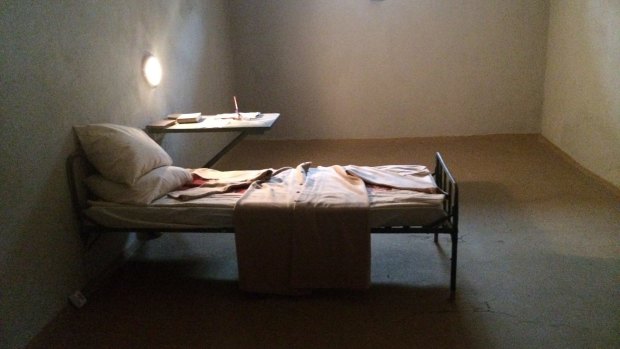
Leon Trotsky's cell, Peter and Paul Fortress, Saint Petersburg.Credit: Ross Peake
The city was founded by Tsar Peter the Great in 1703 and is on the Neva River, at the head of the Gulf of Finland on the Baltic Sea.
In 1914, the name of the city was changed from Saint Petersburg to Petrograd – "Peter's City" – then in 1924 to Leningrad and, in 1991, back to Saint Petersburg.
The city is often described as Russia's most westernised city, and its cultural capital, and is the northernmost city in the world with a population of over one million.
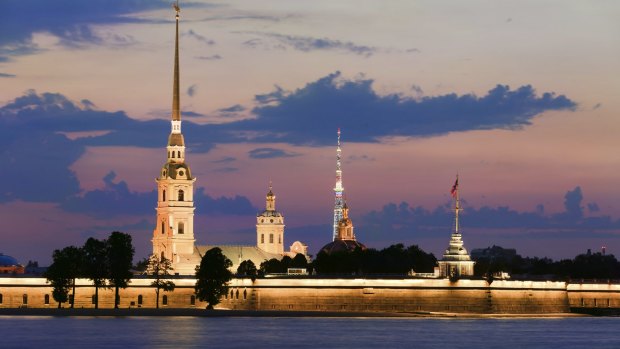
Peter and Paul fortress, St Petersburg.Credit: Getty
The historic centre of the city is a UNESCO world heritage site and is home to the Hermitage, one of the largest art museums in the world.
Standing directly across the river from the Hermitage, the Peter and Paul Fortress lacks the international fame of the museum but is seen as the birthplace of the city. The fortress stands on small Hare Island on the north bank of the Neva River and was built to protect the new capital from a Swedish attack.
It never served its intended defensive function but its sinister history as a jail for political prisoners and the burial ground of the Russian Imperial family draws the tourists. The fortress
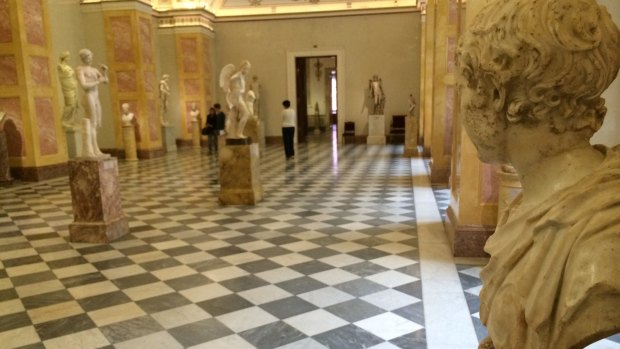
2nd-century bust of Eros keeping watch at the remarkable Winter Palace in St Petersburg.Credit: Ross Peake
It was used as a prison for political detainees from its early days until 1917. It was converted into a museum in 1924 but suffered heavy damage during World World II when the German army laid seige to the city. It was rebuilt after the war, to become a tourist attraction.
The cells of the Trubetskoy Bastion, which was used as the main prison block, have been partially reconstructed. Cell 60 was where Trotsky was held from April 4 to June 3, 1906.
Later, the Marxist revolutionary became leader of the Red Army but was exiled from the Soviet Union in 1929 and assassinated in 1940 on the orders of Joseph Stalin.
The cells of the fortress are described officially as grim – no argument there – but are surprisingly large compared with older Australian prisons, with the result that the narrow iron bed in each cell looks tiny.
Tourists cannot enter cell 60 but can stand at the door and see the space occupied by Trotsky during his incarceration.
Other political prisoners held in the "Russian Bastille" included Alexander Lenin, Vladimir Lenin's elder brother who was hanged for his role in an attempted assassination of Alexander III, and the writer Maxim Gorky.
The stone and concrete hallways are hauntingly silent, with visitors awed into silence by the complex.
Emerging into the weak sunshine, they see the grounds of the fortress dominated by the striking Cathedral of Peter and Paul which is topped with a 122-metre needle-like bell tower and a gilded, angel-topped cupola. Most of Russia's prerevolutionary leaders, from Peter the Great, are buried there.
In 1998, a solemn ceremony was held to inter the remains of Tsar Nicholas II, his wife, three of his five children, their doctor and three servants, on the 80th anniversary of their deaths. Large photographs inside the church depict the historic event, attended by President Boris Yeltsin and many Romanov family members.
A canon fires at noon, startling the tourists.
Across the river, the enormous square in front of the Hermitage museum is a must-see for tourists heading for the institution, where a half day visit just touches the surface. The visitor is informed by proud staff that if one stood in front of each display piece for just one minute, it would take a year to see the entire collection.
The museum was founded in 1764 by Catherine the Great and has been open to the public since 1852. Its collections contain more than three million items including the largest collection of paintings in the world.
The collections are spread over six historic buildings in close proximity; the main one is the ornate Winter Palace, a former residence of Russian emperors.
Foreigners pay more to see the collection than citizens of Russia and Belarus but this does not appear to deter tourists.
Nearby, one of the city's most unusual sites is the Church of the Saviour on Spilled Blood. The church was built on the site where Emperor Alexander II was assassinated and was dedicated in his memory. It is one of the main attractions in the city, with its ceramic walls and numerous domes.
The walls and ceilings inside the church are completely covered in intricately detailed mosaics. It is claimed the church contains over 7500 square metres of mosaics, more than any other church in the world.
It is built beside a canal, one of many criss-crossing this part of the city.
The writer travelled at his own expense.
Sign up for the Traveller Deals newsletter
Get exclusive travel deals delivered straight to your inbox. Sign up now.